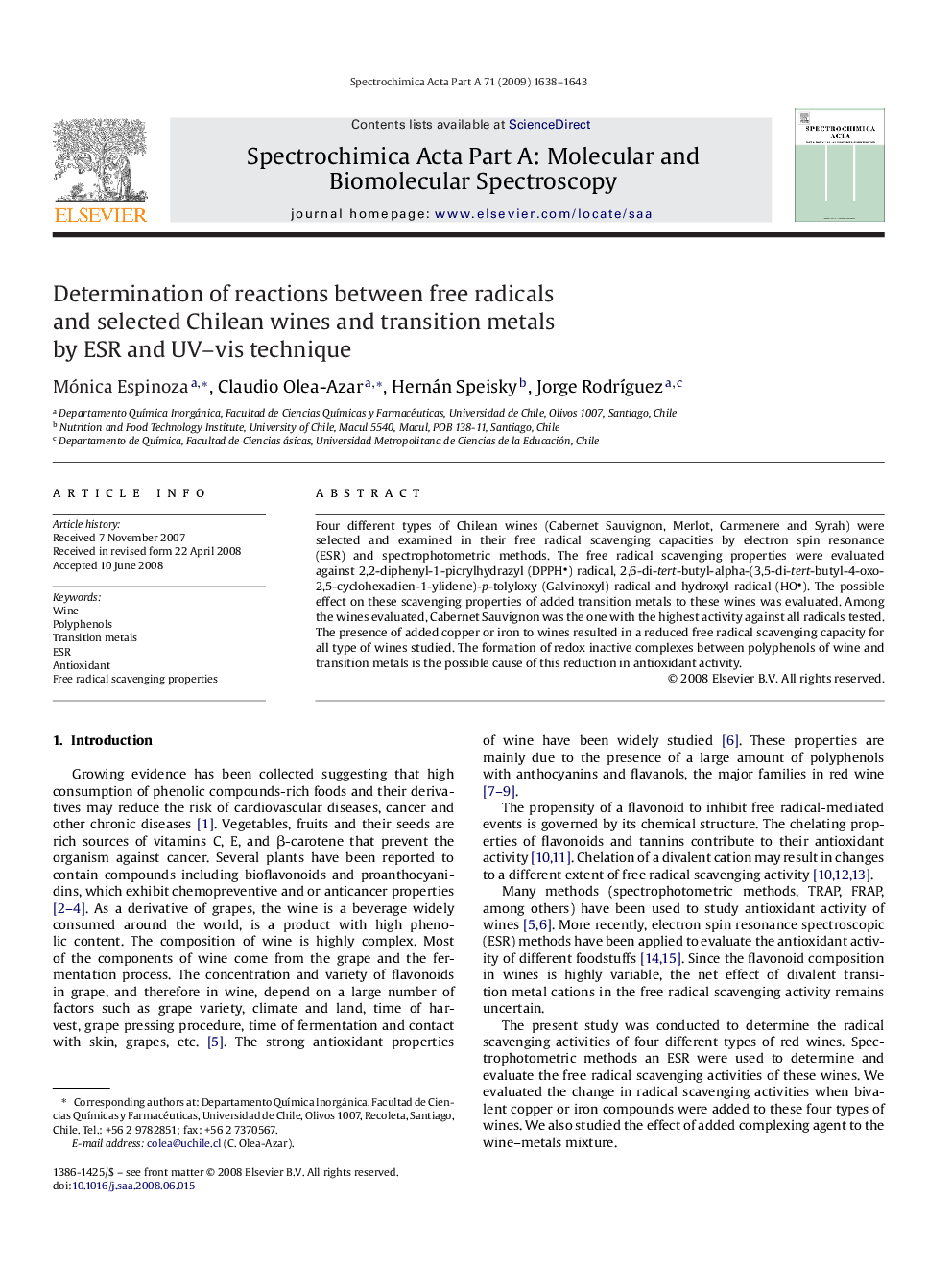| Article ID | Journal | Published Year | Pages | File Type |
|---|---|---|---|---|
| 1234946 | Spectrochimica Acta Part A: Molecular and Biomolecular Spectroscopy | 2009 | 6 Pages |
Four different types of Chilean wines (Cabernet Sauvignon, Merlot, Carmenere and Syrah) were selected and examined in their free radical scavenging capacities by electron spin resonance (ESR) and spectrophotometric methods. The free radical scavenging properties were evaluated against 2,2-diphenyl-1-picrylhydrazyl (DPPH) radical, 2,6-di-tert-butyl-alpha-(3,5-di-tert-butyl-4-oxo-2,5-cyclohexadien-1-ylidene)-p-tolyloxy (Galvinoxyl) radical and hydroxyl radical (HO). The possible effect on these scavenging properties of added transition metals to these wines was evaluated. Among the wines evaluated, Cabernet Sauvignon was the one with the highest activity against all radicals tested. The presence of added copper or iron to wines resulted in a reduced free radical scavenging capacity for all type of wines studied. The formation of redox inactive complexes between polyphenols of wine and transition metals is the possible cause of this reduction in antioxidant activity.
